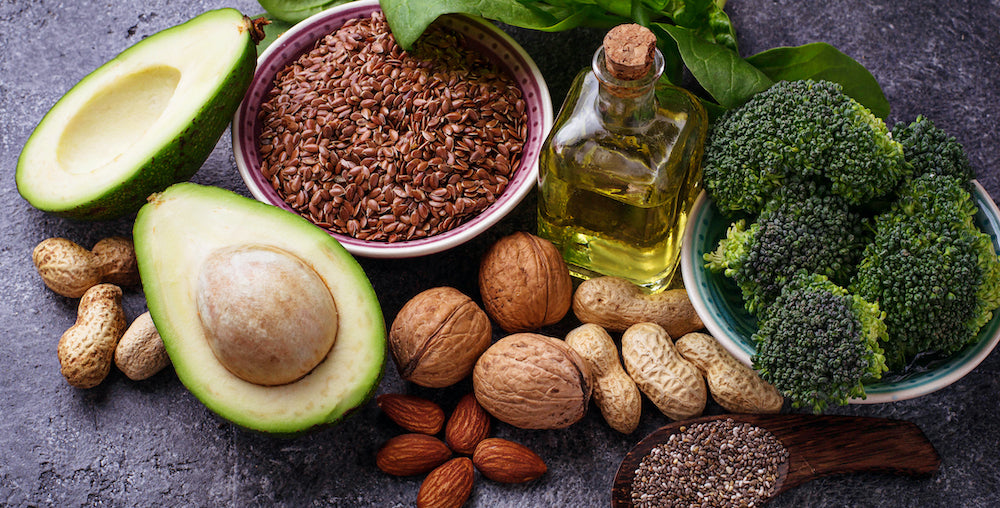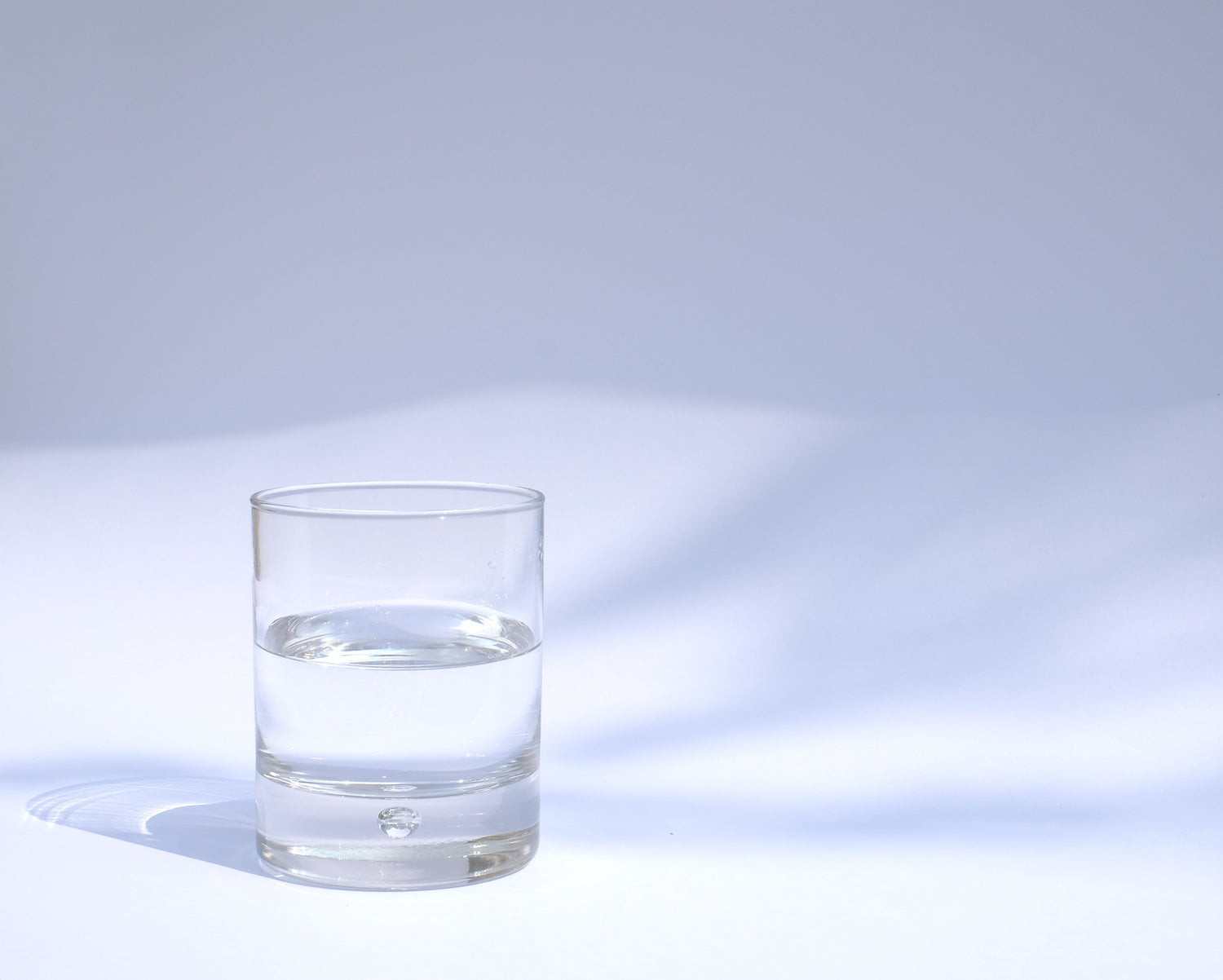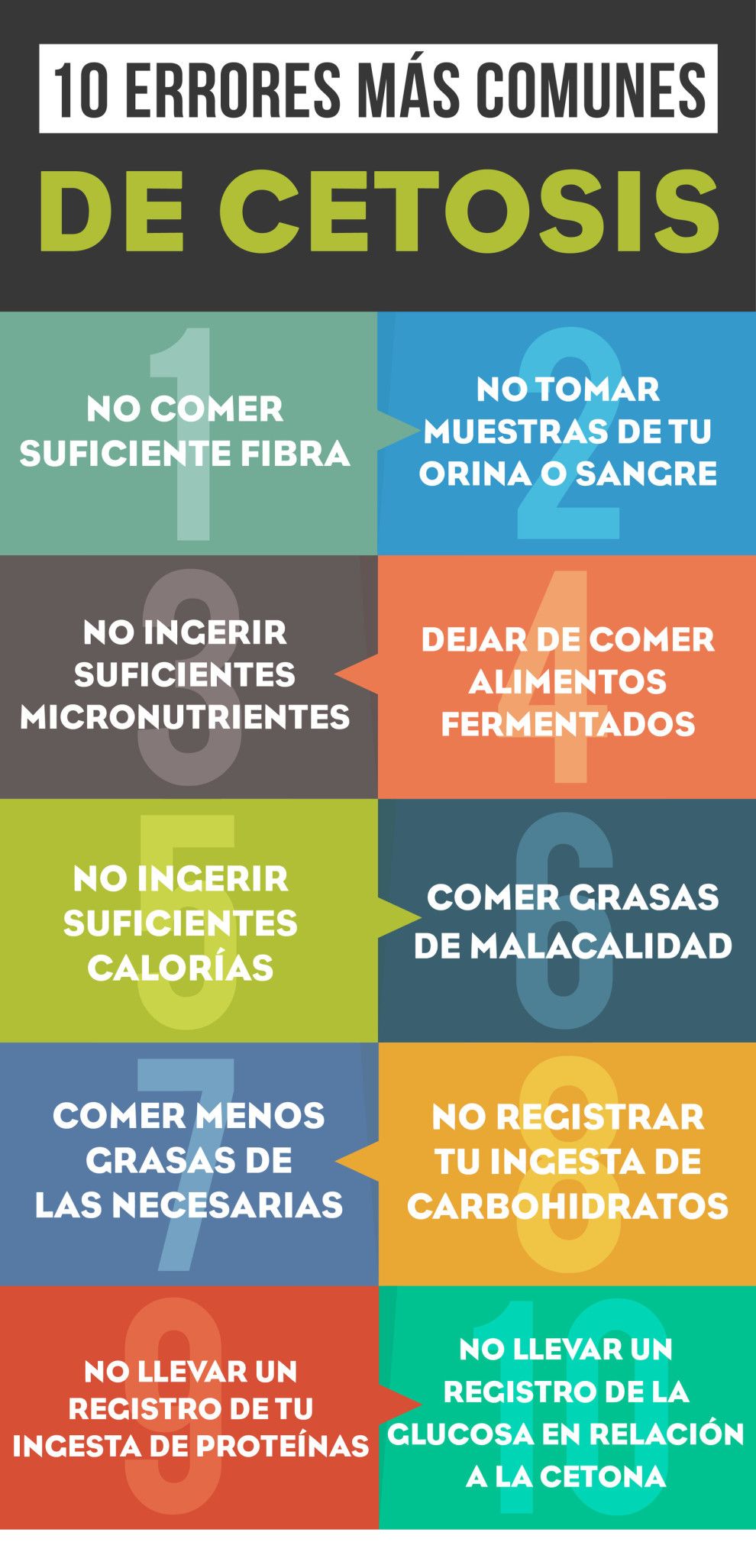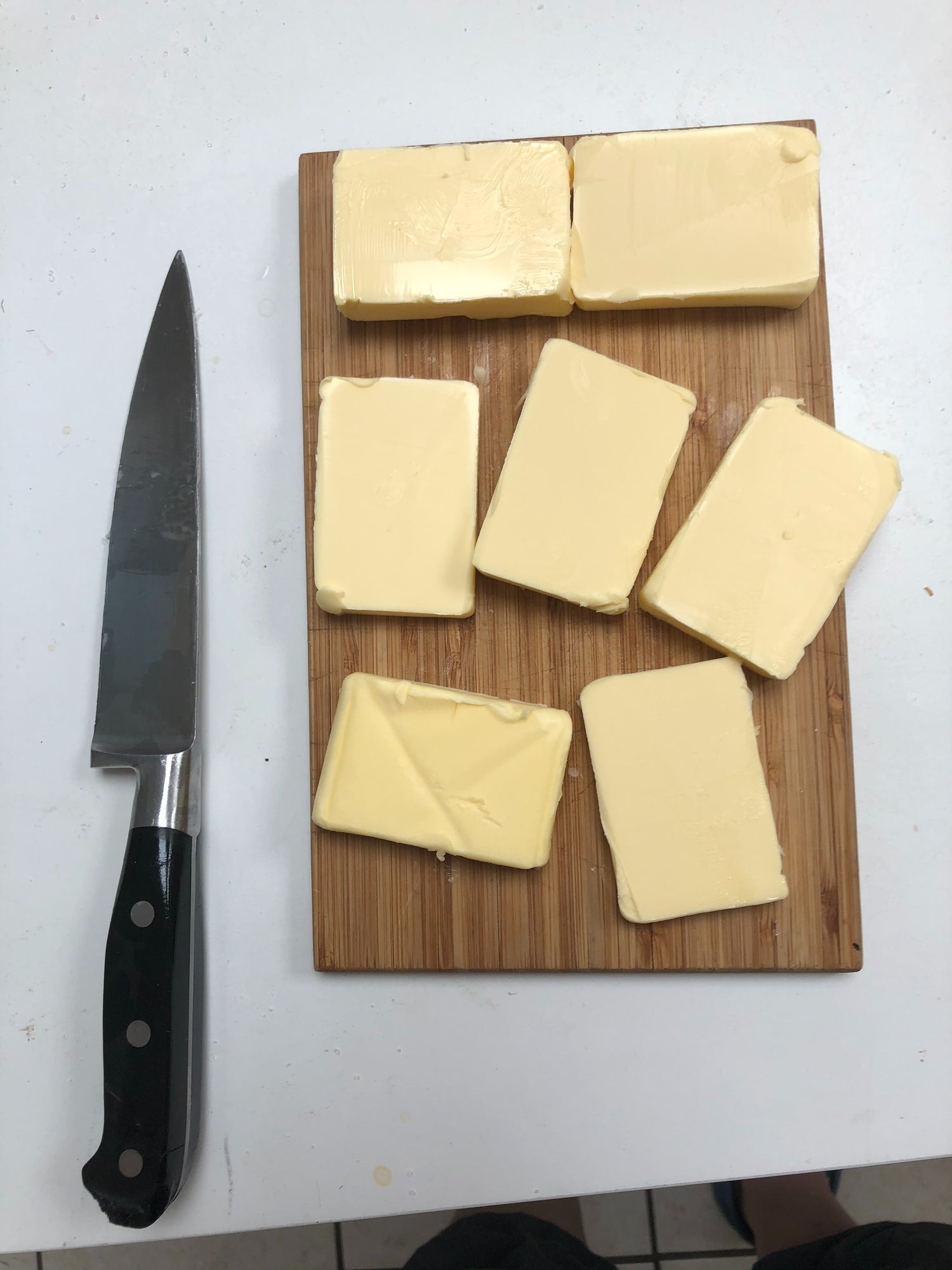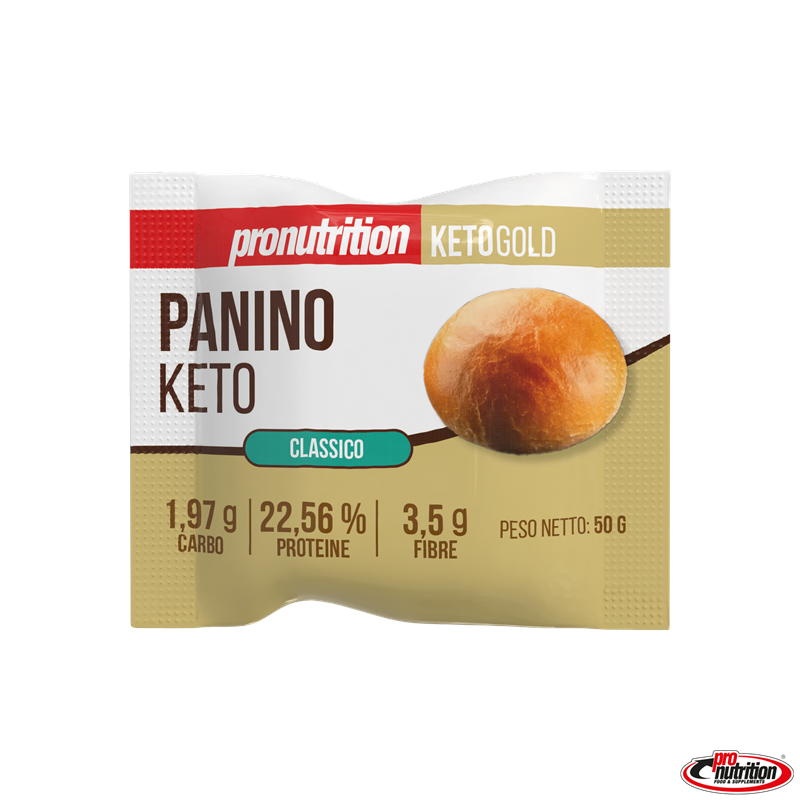Keto Information
Keto Information
The Ultimate Guide to Ketosis
Keto-what? Many people struggle to distinguish the ketogenic diet from other nutritional strategies because they simply feel it's another label without understanding the possible underlying mechanisms. The key differentiator here is nutritional ketosis. Ketosis is a perfectly natural metabolic state of the body in which you predominantly burn stored body fat for fuel instead of glucose . Let's discuss how you get into ketosis and what the benefits are. Table of Contents: -Ketones -The benefits -The Ketogenic Diet -Exogenous ketones -How to test for ketosis -How to use ketosis -Considerations Most of us have been told that our body's primary source of energy is glucose, and that it needs to be fed a steady supply of carbohydrates regularly throughout the day. However, there is a more efficient fuel source that is underutilized by most: ketones. In the absence of standard glucose availability, the body metabolizes fat for energy and produces ketones, which are then used by your cells to fuel their work. By definition, nutritional ketosis is the metabolic state of having ketones in the blood, usually above 0.5 mmol/L . The whole concept of the ketogenic diet is to eat a diet that promotes lower glucose availability to bring your body into ketosis. We believe our ancestors had infrequent eating times and were subject to unintentional bouts of intermittent fasting that primarily saw the body in a ketogenic state. Nutritionally, this means eating enough protein, fewer carbohydrates most of the time, and higher amounts of healthy fats. Research has been and is continually being conducted to unravel the mechanisms and potential applications of a ketogenic diet. From now on, the main reasons why people opted for this lifestyle are to improve body composition, increase mental performance, increase exercise and athletic performance, improve mood, and prevent and treat diseases. ketones Ketone Categories: 3 types are produced when the body enters ketosis. Acetoacetate (AcAc) : the first created from the decomposition of fatty acids, converted into BHB or acetone. Beta-hydroxybutyrate (BHB) – Created from acetoacetate, although technically not a ketone due to its structure, it is still identified as one. Acetone : A byproduct of acetoacetate, it breaks down rapidly and is eliminated from the body through the excretory systems or in respiration. Why the body uses ketones Humans have always relied on ketones for energy in the absence of glucose or when glucose is scarce, as we mentioned earlier. An example of this would be our ancestors having fewer carbohydrate options during the winter. Humans are actually brought into this world at birth in a state of ketosis. The reality is that modern food availability, conventional nutrition advice, and more all see more carbohydrate abundance than is necessary for the average person. This means that most people rarely enter ketosis, and the metabolic pathway becomes a road less traveled. The aforementioned periods of time where carbohydrates are less abundant, as well as periods of unplanned fasting and time availability, saw humans in states of nutritional ketosis. Because of this, our bodies are amazing at adapting to the ketogenic state. Benefits of ketosis While health and nutrition aren't a one-size-fits-all approach, the benefits many are experiencing and can expect from nutritional ketosis are as follows: -Better Body Composition -Improved mental focus and energy -High level of physical fitness and athletic performance -Improved mood and decreased anxiety -Improved insulin sensitivity and blood sugar health -Abundant energy A large number of specific benefits -Increased fat burning: In ketosis, you burn dietary fat and your own body fat as your primary fuel. - Appetite and craving regulation: Better regulation of satiety and blood sugar, as well as potential ghrelin balance, means you can be more in tune with true hunger versus cravings. The high protein, fiber, and fat content will boost satiety. -Blood sugar balance: Many people eat in a way that includes blood sugar spikes that can leave them feeling exhausted, unfocused, and craving food again soon after eating. Ketosis has the opposite effect. Additionally, eating quality protein, vegetables, and fats also helps this process. -Hormone calibration: Ketosis helps promote the regularity of hormones that affect weight. This is another driver of how ketosis can help you avoid addictive junk food cravings. Cognitive benefits A poorly designed or uncontrolled diet can lead to mental confusion, decreased mental acuity, and difficulty concentrating. Many report feelings of being overreactive and less clear with a poor diet. Ketones help maintain high-octane energy levels in mitochondria, which in turn produce energy for cells in the body and brain. Ketones also helped improve energy efficiency by providing the body with more energy units, also known as ATP. The higher content of healthy fats also supports the health of our brain because the brain is our fattiest organ, composed of more than 60% fat. Research also shows that the brain prefers fat as fuel predominantly over glucose. Benefits of training and exercise -Fat adaptation can help with endurance by providing the body with the primary fuel system it needs to maintain performance. Your body will use oxygen more optimally and efficiently. - Adapting to fat also allows the body to retain more muscle glycogen to be used during more appropriate rest periods during training rather than immediately depleting it. -Spending regular time in ketosis helps improve mitochondrial function. This means you're fueling your body's energy batteries to optimize your overall health and long-term physical performance. -Better blood glucose balance means fewer ups and downs and less performance. -Better energy availability to avoid shocks when exercising. Exogenous ketones While we've expanded our guides and articles on exogenous ketones, please note that they are a supplement used to improve health, performance, and energy delivery. They are often used as a supplement to support a low-carb diet, although they can be taken with any nutritional program to support a lifestyle. They provide your body with ketones that your body can use as fuel that it does not directly produce itself. In fact, the body cannot tell the difference. Common uses for exogenous ketones: -Helps in the process of adapting to ketosis by helping to mitigate the symptoms of keto flu. - Clean energy without adrenal stress and caffeine at any time of day. -Promote satiety and suppression of desire. -A decrease in inflammation. -Reduces anxiety and improves mood. -Provide cognitive clarity and increased mental performance. Additional benefits -By flooding your body with higher levels of ketones, you can maximize the benefits of ketosis. -Ketones enhance the body's energy systems and provide direct energy to brain cells. -Optimizing your ketone content will help support a foundation for overall health, wellness, disease prevention, and longevity. Where to start with exogenous ketones Try taking a morning supplement first thing or after breakfast to kick-start your day. Depending on your needs and other variables, consider having a second serving in the afternoon. Needs: Why, when and where to take exogenous ketones -In the morning to kick-start your energy for the day. -Pre-workout is a powerful natural energy and performance booster. -Between a long interval of meals during the day while adapting to ketosis. -During a power act later on day 2, it rewires your mental performance and makes you sharper than a tack. If you tolerate caffeine well or perhaps love your morning coffee, you can use creamier versions to boost your drink. -After eating a meal that takes you out of ketosis if you have those initial side effects and symptoms of that first carb refeed. -If you need energy later in the day and still want to be able to go to sleep on time. The ketogenic diet A ketogenic diet is an approach to eating that is high in fat (~70%), moderate in protein (~20-25%), and low in carbohydrates (~5-10%). These ratios were designed to mimic the effects of fasting to induce nutritional ketosis in the body. However, it's not just about proportion: you need quality food! It is important to remember that these ratios were designed for medical use and to induce the highest degree of ketosis. That doesn't mean everyone has to be in such a strict ratio. What's more important than being perfectly in ketosis all the time for the vast majority is becoming fat-adapted and spending a lot of time in some spectrum of ketosis. Exogenous ketones can help optimize ketone levels so that people don't have to also follow a strict ketogenic diet. Carbohydrate consumption Conventional wisdom has a range of approximately 25 to 50 grams of carbohydrates per day for those following the ketogenic diet. You'll remember that there is some leeway here if you're consuming exogenous ketones, and also depending on your own training style and unique body. Fat consumption Most of your calories on a ketogenic diet come from fat. Fat is considered the dominant macronutrient for a ketogenic diet. Because fats are stored in your cells for energy and because of the usual nutritional considerations with any food, it's critical to get high-quality, healthy fats. Many also find that after the initial transition phase, they tend to reduce their fat intake and increase their protein intake. Protein level The standard recommendation is generally 0.7-0.8 g of protein per pound of lean body mass. The reality is that you may have higher amounts of protein than commonly recommended in the ketogenic diet. Remember that this lower protein threshold was created as a ratio for medical applications in children, and that those who lead active lifestyles and athletes generally need more protein and can still enjoy the benefits of ketosis. The idea that excess protein increases glucose levels and decreases ketone levels is, for the most part, incorrect, although there are ways to eat protein in such a way that it increases blood sugar, such as taking whey protein alone. The bottom line here is that these are guidelines, and because of their initial reason for creation, they are flexible. It is important to find a ratio that best suits you. Types of ketogenic diets The following are the most common variations of the ketogenic diet: -SKD: Standard Ketogenic Diet: ketogenic diet with the original portions of macronutrients. -CKD: Cyclical Ketogenic Diet - Regular carbohydrate research sessions that are supported by prolonged periods of low-carb eating that resemble a standard ketogenic diet. -TKD: Targeted Ketogenic Diet: Small amounts of carbohydrates are added around exercise to optimize training performance and muscle growth -There is also an unnamed version of a ketogenic diet that sees users consume higher amounts of protein depending on their unique needs. How to test for ketosis: Many find that testing their ketone levels helps them stay accountable and understand how their adaptation process is going. However, we don't recommend doing this excessively forever because it can create an effect where you focus on minors and focus exclusively on ketone levels instead of looking at other indicators of optimal health and fitness. Methods for measuring ketone levels are as follows: Urine analysis: While this is the most common way to perform the test, we do not necessarily recommend it. This is only part of the picture and the truth is that if your body is using ketones and your energy balance is such, you probably won't have excess ketones in your urine. You can easily do this at home by urinating on urine strips. The easy setup and cost-effectiveness of this make it a favorite, though not the most accurate. Blood test: You can pick up a home unit 2 to test your blood by pricking your finger with a test stick to measure the amount of a certain ketone called BHB. This is considered the most accurate way to assess your body's ketone levels, although it is also the most expensive and somewhat invasive. Breathalyser: The respiratory quotient test helps us measure a type of ketone in the breath known as acetone. This is quite unreliable, although it may give some an indicator of where they are. Interpretation of results: If your ketone levels are between 0.5 and 3.0 mmol, you are in some spectrum of ketosis. From theory to practice: applications of ketosis Ketosis has been shown to help directly or indirectly with the following: Weight loss Athletic performance and fitness Focus and mental cognition Sustainable energy Muscle development Hormonal Regulation Longevity Blood sugar rhythms Epilepsy Cancer Depression anxiety and stress Inflammation Migraines Alzheimer's and neurodegenerative disease Please understand that this and all information on the sky is not intended to be a substitute for medical advice from a qualified health professional. We recommend consulting with a qualified healthcare professional before making any changes to your health regimen. Ketogenic Considerations Dehydration: Nutritional ketosis comes with less glycogen, which means you'll have less hydration. Remember it's in the name carbo-HYDRATE! Additionally, eating quality foods in general reduces inflammation. While losing this water retention is generally a good thing, it doesn't distinguish between essential good hydration and unwanted chronic inflammation. Ketosis also reduces insulin levels which allows for fluid release because insulin prevents sodium excretion. What this means is that you will want to supplement with electrolytes or perhaps an exogenous ketone supplement that already has electrolytes built in. Possible side effects during the initial phase of ketosis adaptation may include: -Headache -Fatigue -Bad mood -Stomach and digestive problems -Nausea -Poor mental cognition -Decreased physical performance Solutions -Eat the right proportions of foods from the right sources to get enough energy and the right nutrients. -Time: Give your body a chance to adapt. -Make sure you stay on top of your sleep. -Drink a large volume of good quality water. -Add natural salt and electrolytes. -Supplement with exogenous ketones.
Read moreTips for counting macros on the keto diet
Counting macros on a keto diet is an important part of success. Here are some tips for counting macros on keto: Calculate your daily calorie needs: Use an online calorie calculator to determine your daily calorie needs based on your age, sex, height, weight, and physical activity level. Set your macro goals: For the keto diet, the goals are generally 70% fat, 25% protein, and 5% carbs . Use an online calculator to set your macro goals. Use an app or online tool: There are many apps and online tools available to help you count your macros on keto. We recommend the free app @getmacros. Read food labels: Be sure to read food labels carefully to determine the amount of carbohydrates, protein, and fat in each serving. Also, be sure to consider the amount of fiber, as fiber is not counted in net carbs. Measure your portions: Use a kitchen scale or measuring cup to accurately measure your portions and ensure you're meeting your macro goals. Track your results: Track your results daily to ensure you're meeting your macro goals. If you're not meeting your targets, adjust your diet accordingly. Fats: Coconut oil Butter Olive oil Avocados Nuts and seeds (almonds, walnuts, macadamias, chia seeds, flax seeds) Proteins: Meat (beef, pork, lamb) Poultry (chicken, turkey, duck) Fish and seafood (salmon, tuna, shrimp, lobster) Eggs Cheese Carbohydrates: Non-starchy vegetables (spinach, lettuce, broccoli, asparagus, zucchini) Berries (strawberries, raspberries, blueberries) Avocados Nuts and seeds (almonds, walnuts, macadamias, chia seeds, flax seeds) Low-carb sweeteners (erythritol, stevia) It's important to note that carbs on the keto diet are measured in net carbs , which are calculated by subtracting fiber from total carbs. High-fiber foods, such as non-starchy vegetables and nuts and seeds, can be included in the keto diet because they are low in net carbs.
Read moreHow to read nutrition labels on keto
Reading nutrition labels well to get into ketosis isn't difficult. Keep reading and To start the keto diet , we have to respect the % of the main macronutrients: 5% carbohydrates, 20% protein, and 75% fat . (5% carbohydrates are approximately 20 grams.) If you follow these percentages, you'll enter KETOSIS , which is when your body starts creating ketones, which causes it to burn fat instead of glucose. (That's when we start losing volume and weight.) NET CARBOHYDRATE is what we use in keto to differentiate which types of carbohydrates do not raise our glucose. Carbohydrates can be starches, fibers, and sugars. For example, fiber and sugar alcohols don't affect our glucose levels, so we'll discount them to determine the net carbs we're going to eat. NET CARBS = TOTAL CARBS - POLYALCOHOLS - FIBER LABELS IN THE EUROPEAN UNION Check if the data is per serving, per package, or per 100g. Fats per 100 gr. Carbs per 100g. We don't need to subtract anything here, since the fiber has been included in another section. That means it's already subtracted from the total carbs. Proteins per 100 gr. AMERICAN LABELS It tells us that the numbers it gives us are per RATION Fat per serving It tells us the total carbohydrates, since it has a subsection for fiber. That fiber (and also the polyols, if any) are what we can discount. of carbohydrates. In this case, the net carbs would be: 34 gr. (total carbohydrates) - 4 gr. (dietary fiber) = 30 gr. per serving of net carbs Protein per serving LATEST KETO TRICKS: It's NOT possible for your carbs to be negative. If so, you're subtracting something that was already subtracted. BE CAREFUL with maltitol. Many products labeled "sugar-free" are sweetened with maltitol. No, it's not actually sugar, but it raises blood glucose just like sugar. So pay close attention. Remember that to be satisfied, it is important that you eat the % of fats that you are entitled to. Finally, I recommend the free app MACROS , which allows you to scan the code of the products and tells you exactly the values it has. each product and saves them for You can always know the macros you've eaten that day. Just enter your weight, height, age, and activity level. And it'll tell you everything.
Read moreList of foods allowed on the keto diet
List of foods allowed on the keto diet Also list of foods not allowed on keto. A simple keto guide to quickly understand the best foods for weight loss on the keto lifestyle.
Read moreQuick and easy guide to starting the keto diet
QUICK AND EASY GUIDE TO GET STARTED ON KETO. For those of you who want to start keto, here's a quick and simple guide to getting started on this lifestyle change. As you know, it's very important to keep track of your macros. What are macros? We refer to carbohydrates, fats, and proteins. Download the free app @getmacros to adjust your macronutrients to your specific needs. Once you learn how to calculate macronutrients in foods , the calculations will come naturally. The following is a list of behaviors that you can modify in your daily routine: Don't eat sugar . Replace it with erythritol. It will be the best beauty and health remedy you'll ever take, believe me. Intermittent fasting will help you empty your carbohydrate stores so your body can start burning fat through nutritional ketosis. Don't waste money measuring ketones; your body will let you know. Drink water and don't forget to take electrolytes to avoid the initial "keto flu." Hydrate , drink water, bone broth, unsweetened tea, or bulletproof coffee. Try to get 8 hours of sleep a day. Although it may not seem like it, sleep is very important for our body to rest and for our metabolism to rest. Get some physical exercise . A brisk walk, a run, a swim, a bike ride, a skate ride, or even a stair climb. Even a little exercise will help you burn off the carbohydrates you've eaten. If you're craving certain foods, look for substitutes at keto stores , such as tiendaketo.es . Low-carb products, such as protein-rich bread , low-carb pizza, nut flours , konjac pasta or rice, low-carb granola , coconut oil with MCT , low-carb tomato sauce , and protein snacks are some of the best substitutes for your daily diet.
Read moreCan vegans do the ketogenic diet?
Are you vegan or vegetarian? Your vegan/vegetarian diet doesn't have to prevent you from enjoying the benefits of a ketogenic diet. Many people do keto with ultra-low-carb foods that are exclusively plant-based. It's a little more difficult, and you may need to supplements to meet some of your metabolic requirements, but it can be done. If your diet is vegan , you'll need to limit your food intake much more to achieve ketosis . Check the macro count (carbohydrates, healthy fats, and protein) and make a list of vegetable and seed oils that can replace the fats found in meat. Since we won't be using any animal-based foods, the vegan keto diet It will be limited to sources of protein and healthy fats of vegetable origin in which, in addition, there must be little to no presence of carbohydrates . Olive oil, linseed oil, coconut oil , They are excellent sources of healthy fats with positive anti-inflammatory properties. Peanut butter and eggs are also good sources of protein. If you have difficulty obtaining virgin or cold-pressed oils, you should supplement your diet with EPA/DHA ( Omega 3 ) capsules. Thus, we can turn to nuts , walnuts, peanuts, which are the only ones legume with low carbohydrate content, tofu, ( but No textured soy because it has high proportions of carbohydrates ) seitan, dried algae especially spirulina algae, and we can also turn to seeds rich in vegetable proteins . Also various seeds (which also add protein, vitamins, minerals and fiber), avocado and olives. With these foods we can make, for example, a vegan tofu scramble , spirulina smoothie , homemade peanut or nut butter (sugar-free), seitan with almond sauce , sautéed firm tofu, and other plant-based protein dishes. With these foods we can make crunchy seed crackers , baked nuts with curry or other spices , guacamole , black olive pâté (without anchovies), tahini sauce , chocolate and avocado cupcakes , or olive oil cream.
Read moreKeto Kachapuri Recipe
(Camila Kost version) INGREDIENTS (8 servings) MASS 75 g of almond flour 125 g of mozzarella , in strands 30 g of cream cheese 1 egg 1 teaspoon baking powder 1 beaten egg to brush the dough STUFFED 150 g mozzarella, shredded 150g feta cheese, cut into small cubes 2 eggs 30 g of butter , cut into two medium squares . PREPARATION 1. Preheat oven to 200°C . 2. In a large microwave-safe bowl, place the almond flour , mozzarella, and cream cheese. Microwave for 1 minute, mix and heat for 1 more minute. Mix until well combined. 3. Add the baking powder and egg. Mix again and knead until a smooth dough forms. 4. Mix the two cheeses of the filling and set aside. 5. Divide the dough into 2 balls. Place one ball between two sheets of parchment paper and roll it out with a rolling pin into a round (pizza shape). Cover the dough with half of the cheese mix and fold the two sides together to form a boat shape. . Connect the touching ends. Repeat. 6. Place the jars on a baking sheet lined with parchment paper. Brush the sides of the jars with beaten egg. to brown the dough. 7. Bake for 10 minutes or until the cheese melts. Remove from the oven, break an egg in the center of each jar and add the square of butter on one side. 8. Return to the oven for 5 more minutes or until the egg is cooked. Garnish with chopped parsley and enjoy! 9. Enjoy! . TIP: This is the classic way to stuff Khachapuri, but have fun and make them with your favorite keto filling. .
Read moreHOW DO I REPLENISH ELECTROLYTES IF I GO KETO?
Sodium, potassium, and magnesium are found naturally in foods, and most people will have no trouble meeting their essential electrolyte levels on a ketogenic diet. The suggested daily intake of sodium/potassium/magnesium is: 5000 mg of sodium 1000 mg of potassium 300 mg of magnesium These are some of the amounts of electrolytes found in our foods: Sodium: cured meats (1.06-1.76 g/100 g), cheeses (0.70-1.06 g/100 g), canned tuna (300-400 mg/can), mustard, creamy salad dressings, broth, table salt Potassium: raw spinach, avocado, mushrooms, salmon, steak, pork loin, light salt (290 mg sodium and 350 mg potassium per 1/4 teaspoon) Magnesium: raw spinach, avocado, chard, sprouts, seaweed, coffee, almonds, wild fish, supplements A quick note about magnesium supplements: If you choose to take a non-food magnesium supplement , make sure the compound ends in -ate (citrate, glycinate, etc.). Avoid magnesium oxide , as it is the least bioavailable form of magnesium. Magnesium bisglycinate is ideal.
Read moreKETOSIS AND WATER
Ketosis begins when liver glycogen is depleted, and the amount of glycogen in the liver only provides enough glucose for 12 to 16 hours. Therefore, when you limit carbs to 20 net grams, it doesn't take more than 24 hours to enter ketosis. What should I drink and how much? Water naturally suppresses appetite and helps the body metabolize fats. Studies have shown that a decrease in water intake will cause fat deposits to increase, while an increase in water intake can actually reduce fat deposits. Water retention, a notorious problem on Keto, is best combated by drinking more water. This allows the body to release water it had previously been retaining in the event of dehydration. Water is an important factor in weight loss and is often underestimated. Your progress will be slow if you don't hydrate. The actual amount you need will depend on many factors. I'm peeing a lot! Is that normal? Yeah. The water weight you lose is just that: water. Even if you drink a lot, you'll urinate more than you consume. This is completely normal during the first day or two of ketosis.
Read moreWHAT IS THE KETO FLU AND HOW LONG WILL I HAVE IT?
During the first few days of the ketogenic diet, some people may experience flu-like symptoms, which often make people think that ketosis is not suitable for our bodies. These symptoms include headaches, lethargy, mental confusion, irritability, and generally feeling "off." This is commonly known as the keto flu, carb flu, or induction flu. The keto flu has a few causes which include Adjustment to ketosis. While our bodies are designed to be able to transition from ketosis to glycolysis, it's not always an easy transition. Carbohydrate withdrawal. There are studies that show that sugar acts like a drug. Drastically reducing carbohydrate (sugar) intake can cause flu/withdrawal symptoms. Either you hold out until the cravings subside or you reduce your carbohydrate intake slowly. Finally, the most common cause of the flu: electrolyte deficiency. Most people lose weight quickly when they enter ketosis. Along with that water, you are flushing electrolytes out of your body. Combined with the fact that those following a ketogenic diet require more sodium, it means it's very easy to not get enough and get the flu. No you assume that simply adding more salt to your food will be enough. Keep in mind that symptoms of the "keto flu" can occur at any time while on a ketogenic diet. The flu can almost always be avoided if you stay well hydrated and properly replenish your electrolytes.
Read moreHOW DO I KNOW I'M IN KETOSIS?
Entering ketosis can have physical symptoms, although not always. Some common symptoms people experience when starting a ketogenic diet include: Ketone breath Ketone breath, also affectionately known as "metal breath" or "keto breath," is caused by the presence of ketones in your body. You will have a metallic taste and a slight ammonia scent. You may also notice a change in the smell of your sweat. Changes in urine Ketosis not only changes your breath but also your urine; You may start to develop a vaporous consistency and smell different, more potent. Increased thirst / dry mouth Because you will be losing water and electrolytes, you may experience increased thirst and/or dry mouth symptoms. Stay hydrated and check your electrolyte guidelines. Keto flu Fatigue, headaches and/or difficulty concentrating. Remedies for the keto flu are discussed below. Digestive problems The most common digestive problems when starting a ketogenic diet are constipation and diarrhea. These are temporary as your body adapts to the increased fat intake. Changes in menstruation Commonly referred to on this subreddit as "shark week," the menstrual cycle can be greatly affected by the ketogenic diet. Many find that the keto diet triggers early periods, even if you're on hormonal birth control or have an IUD. You may continue to experience irregularities for the first three or four cycles, but for most this will be temporary. Are ketosis tests necessary? No. Are ketosis tests recommended? No. Unless you have a specific reason to target a certain ketone level, such as medical or therapeutic ketosis, testing is not recommended, as it can often serve as a distraction from what's important. Chase results, not ketones.
Read moreDO I NEED TO INCREASE MY FAT INTAKE?
If you're doing keto to lose weight, no. A common misconception about the ketogenic diet is that it has to consume a lot of fat. The ketogenic diet is a high-fat diet, but if you're doing keto to lose weight, some of that fat will come from your body. You may have heard that fat is a strategy designed to keep you full. However, your body can't get all of its energy from stored body fat, so make sure you consume at least 30g-50g of fat per day. If you're doing keto to lose weight, fat is the first thing you want to eliminate. You should limit carbohydrates . They are the only macro that has a significant impact on ketosis. There is no minimum carbohydrate intake. Protein is a target . Protein is vital. Unlike carbohydrates and fats, your body cannot store protein. That's why you should prioritize a minimum of protein every day. Fat is for satiating . Fat is what you use for energy on a ketogenic diet, but if you're trying to burn body fat, you don't need to max out on fat. Just eat enough to feel full.
Read more






